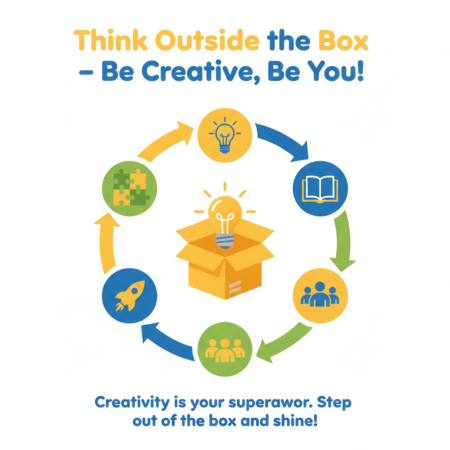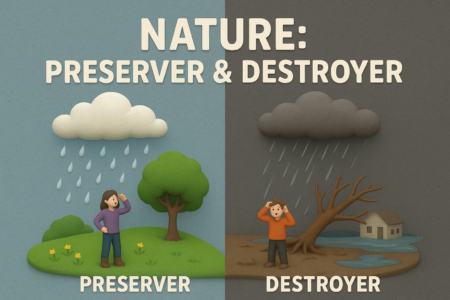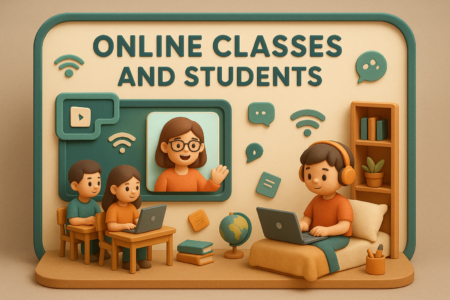Introduction
In today’s digital age, many school students spend long hours in front of screens—whether it’s online classes, mobile games, or social media. While technology has made learning easier, it has also increased the number of students suffering from myopia (short-sightedness). Myopia is a condition where a person can see nearby objects clearly, but distant objects appear blurry. Understanding its causes, history, and prevention methods can help students protect their eyes and enjoy healthier vision.
Discovery of Myopia
Myopia has been known since ancient times. The word “myopia” comes from the Greek word “muo” meaning “to close the eyes.” Ancient Greek physicians first described it as a problem where people squinted to see clearly.
- In the 17th century, glasses were introduced in Europe to correct vision.
- Today, with advanced science, we have treatments like contact lenses, laser eye surgery (LASIK), and ortho-k lenses to manage and even correct myopia.
Causes of Myopia Myopia occurs when the eyeball is too long or the cornea (the front part of the eye) is too curved. This causes light rays to focus in front of the retina instead of on it.

Common Causes in Students:
- Excessive Screen Time: Prolonged use of mobiles, tablets, and computers strains the eyes.
- Lack of Outdoor Play: Research shows that children who spend more time outdoors in natural light have a lower risk of developing myopia.
- Genetics: If parents have myopia, children are more likely to develop it.
- Poor Reading Habits: Reading in dim light or holding books too close can increase risk.
Symptoms of Myopia in Students
- Difficulty seeing the board in class.
- Squinting while looking at distant objects.
- Frequent headaches and eye strain.
- Sitting too close to the TV or screen.
Treatment in Earlier Times vs. Today
- Earlier Times: People relied on simple convex lenses in spectacles. Some cultures used home remedies like applying herbal juices, though these provided no real cure.
- Today:
- Glasses & Contact Lenses – the most common and effective solution.
- Ortho-K lenses – worn overnight to reshape the cornea temporarily.
- Laser Surgery (LASIK/SMILE) – permanent correction for adults.
- Atropine Eye Drops – low-dose drops sometimes used to slow progression in children.
Home Remedies & Eye Care Tips for Students
While home remedies cannot cure myopia, they can reduce strain and support healthy vision:
- Follow the 20-20-20 Rule: After every 20 minutes of screen time, look at something 20 feet away for 20 seconds.
- Palming Exercise: Rub palms together and place them gently over closed eyes to relax them.
- Eye-friendly Diet: Include carrots, spinach, almonds, walnuts, and omega-3 rich foods for eye health.
- Blink Often: Helps prevent dryness from staring at screens.
How to Avoid Myopia
- Limit Screen Time: Use digital devices wisely and avoid long, continuous use.
- Proper Lighting: Always study or read in a well-lit room.
- Outdoor Activities: At least 1–2 hours of outdoor play daily reduces risk.
- Correct Posture: Keep books and screens at least 30–40 cm away from eyes.
- Regular Eye Check-ups: Early detection can prevent worsening of vision.
What to Do If You Already Have Myopia
- Wear prescribed glasses or lenses regularly.
- Inform teachers so they can provide front-row seating if needed.
- Avoid rubbing eyes excessively.
- Continue following healthy eye habits to prevent progression.
Conclusion
Myopia is becoming more common among school students due to increased screen time and reduced outdoor play. While it cannot always be prevented, simple lifestyle changes like regular eye breaks, outdoor activities, and healthy food can protect vision. Modern science offers excellent treatments, but prevention is always better than cure.
👀 Remember: Your eyes are your window to the world. Take care of them today, and they’ll take care of you tomorrow!






